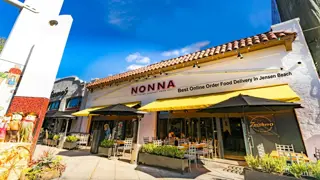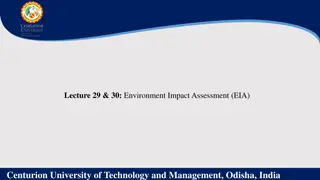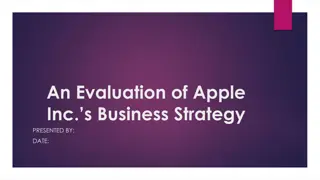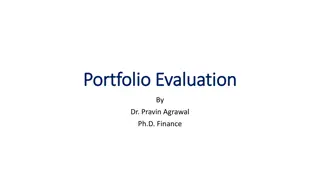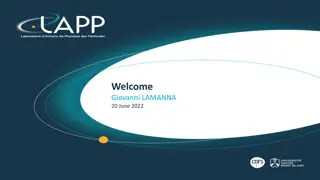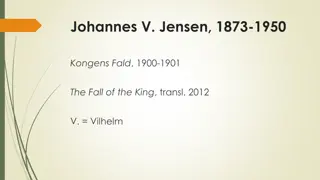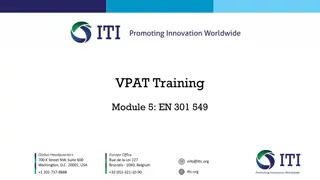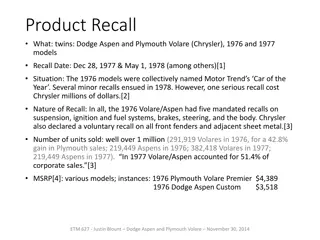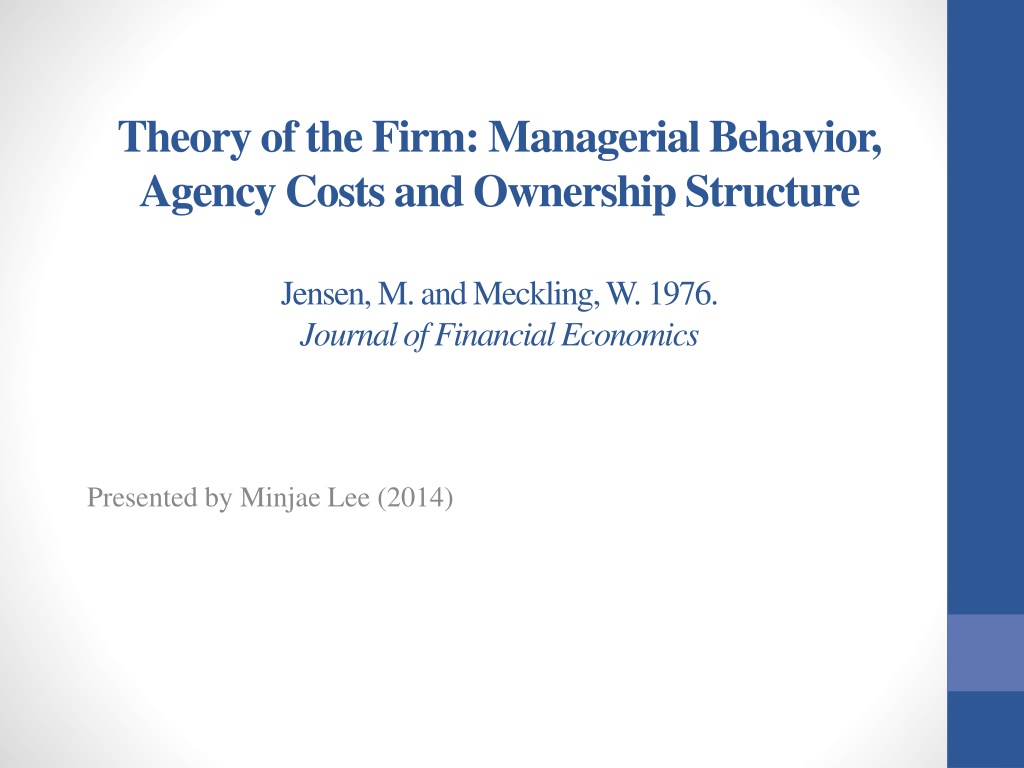
Ownership Structure Theory in Firm Management
Delve into the groundbreaking 1976 article by Jensen and Meckling on the Theory of the Firm, exploring the nexus of managerial behavior, agency costs, and ownership structure. Uncover insights on why managers make decisions that may reduce firm value, the role of common stock in capital sourcing, and the interplay of property rights, agency theory, and finance theory in shaping firm dynamics.
Download Presentation

Please find below an Image/Link to download the presentation.
The content on the website is provided AS IS for your information and personal use only. It may not be sold, licensed, or shared on other websites without obtaining consent from the author. If you encounter any issues during the download, it is possible that the publisher has removed the file from their server.
You are allowed to download the files provided on this website for personal or commercial use, subject to the condition that they are used lawfully. All files are the property of their respective owners.
The content on the website is provided AS IS for your information and personal use only. It may not be sold, licensed, or shared on other websites without obtaining consent from the author.
E N D
Presentation Transcript
Theory of the Firm: Managerial Behavior, Agency Costs and Ownership Structure Jensen, M. and Meckling, W. 1976. Journal of Financial Economics Presented by Minjae Lee (2014)
http://sands.hbs.edu/photos/facstaff/Ent6484.jpg Jensen Harvard Business School (1985-) University of Rochester (1967-1988 ) U of Chicago, Ph.D., (Economics, Finance, and Accounting), 1968 Monitor Group (2000-2009) Meckling University of Rochester (-1983) Passed away (1998)
Studys Motivation Objective of the article is to develop a theory of ownership (or capital) structure for the firm drawing on (1) property rights theory, (2) agency theory, and (3) finance theory This paper tries to answer questions like (p306) Why managers choose activities that potentially decrease the value of the firm Why managers fail to maximize value, yet remain efficient Why the sale of common stock is a viable source of capital even though managers do not literally maximize the value of the firm;
Literature Background: Theory of firm So-called theory of the firm is actually a theory of markets in which firms are important actors How the conflicting objectives of the individual participants are brought into equilibrium so as to yield this result
Literature Background: Property Rights Specification of individual rights determines how costs and rewards will be allocated among organizational participants Significance of implicit and explicit contracting for specification of individual rights Individual behavior in organization depends on the nature of contracts
Literature Background: Agency Costs Agency relationship: the principal delegates some decision making authority to agents to perform some service on their behalf which involves to the agent If both parties to the relationship are utility maximizers there is good reason to believe that the agent will not always act in the best interests of the principal. Agency costs are: Monitoring expenditures by the principal Bonding expenditures by the agent (ex. Non-compete clause) Residual loss Ex) team production, separation of ownership and control
Literature Background: Agency Costs This paper assumes that Individual solves the normative problem how to structure contractual relation between principal and agents Stock and bonds can be issued as claims This paper investigates Incentives faced by each parties and elements of determination of the equilibrium contractual form characterizing the relationship between agent(manager) and outside equity and debt holder(principal)
Notions of the Firm Coase (1937): Boundary of the firm is the range of exchanges over which the market system is suppressed and resource allocation is accomplished by authority and direction Alchian and Demsetz (1972): Emphasis on role of contracts as a vehicle of voluntary exchange Emphasis on joint input production is too narrow Authors definition of the firm: A form of legal fiction (artificial construct under the law) which serves as a nexus of contracting relationships and which is also characterized by the existence of divisible residual claims on the assets and cash flows of the organization which can generally be sold without permission of the other contracting individuals (p. 311)
Agency Costs: Outside Equity If a wholly owned firm is managed by the owner, he will make operating decisions which maximize his utility. The inclusion of outside equity will generate agency costs due to divergence of interests since he will then bear only a fraction of the costs of any non-pecuniary benefits he takes out in maximizing his own utility. Can be limited by monitoring, but the owner will bear the entire wealth effects of these expected costs so long as the equity market anticipates these effects, or as long as the welfare increment he experiences is large enough to offset them.
Agency Costs: Outside Equity Simple formal analysis Formal Analysis => X* : optimal level of x => cost to the firm of providing the increment X- X* of the factors and activities which generate utility to the manager.
Agency Costs: Outside Equity Simple formal analysis (1) When the owner has 100 percent of the equity (2) When the owner sells a share of the firm, 1 -a, (0 < a < 1) and retains for himself a share a. If buyer believes that the owner-manager will consume the same level of non-pecuniary benefits as he did as full owner b. If buyer is aware that the owner will increase his non- pecuniary consumption when his ownership share is reduced.
Agency Costs: Outside Equity Determination of optimal scale of the firm W=Initial pecuniary wealth I=Investment V(I)-I=Net increment in wealth from the investment V=V(I,F) =V(I) when F=0 (1) expansion path OZBC - ex) point B C is optimal point, so If W is large enough to cover I*, manager reach F* and W+V*-I* (2) expansion path ZEDHL - ex) point D => gross agency costs =(V*-I*)-(V -I ) =>Manager stops increasing the size of the firm when the gross increment in value is just offset by the incremental loss involved in the consumption of additional fringe benefits due to his Declining fractional interest in the firm
Agency Costs: Outside Equity The role of monitoring and bonding activities in reducing agency costs Curve BCE depicts a budget constraint derived when monitoring possibilities are taken into account. ( and ) Without monitoring B is the optimal point By incurring monitoring costs, M(=D-C), the equity holders can restrict the manager s consumption of perquisites to amounts less than F . (C is new optimal point) Imposing M lead to increase in firm value by V -V -If the equity market is competitive and makes unbiased estimates potential buyers will be indifferent between two contracts -Given contract (ii), => outside shareholders desire to monitor to the full rights, but price is same as the benefit, so owner-manager reaps all the benefits Monitoring Case
Agency Costs: Outside Equity The role of monitoring and bonding activities in reducing agency costs Bonding Case Owner-manager could expend resources to guarantee to the outside equity holders that he would limit his activities which cost the firm F. (ex. audited by a public account or contractual limitations on the manager s decision making power) It makes no difference who actually makes the monitoring expenditures- the owner bears the full amount of these costs as a wealth reduction in all cases. Solution is exactly the same as if the outside equity holders had performed the monitoring
Agency Costs: Outside Equity Optimal scale of the firm in the presence of monitoring and bonding activities
Agency Costs: Outside Equity Pareto optimality and agency costs in manager-operated firms Finding that agency costs are non-zero and concluding that the agency relationship is non-optimal, wasteful or inefficient is not fair - a perfect example of the fallacy criticized by Coase(1964) and what Demsetz (1969) characterizes as the Nirvana form of analysis.
Agency Costs: Outside Equity Factors affecting the size of the divergence from ideal maximization tastes of managers, the ease with which they can exercise their own preferences as opposed to value maximization in decision making, and the costs of monitoring and bonding activities. cost of measuring the manager s (agent s) performance and evaluating it, the cost of devising and applying an index for compensating the manager which correlates with the owner s (principal s) welfare, and the cost of devising and enforcing specific behavioral rules or politics. Competition from other potential managers cost of replacing the manager capital markets Existence of competition in product market??? => not supported by this paper s hypothesis
Agency Costs: Outside Equity unanswered question How does it happen that millions of individuals are willing to turn over a significant fraction of their wealth to organizations run by managers who have so little interest in their welfare? Why are they willing to make these commitments purely as residual claimants? The role of limited liability. however, it is incomplete since limited liability does not eliminate the basic risk, it merely shifts it. It doesn t explain why they obtain it through the particular forms we have observed for such Iong periods of time. The irrelevance of capital structure. the value of the firm is independent of the financial structure. Assumption is: the probability distribution of the cash flows to the firm is independent of the capital structure Which is not realistic because of the existence of bankruptcy and tax subsidies and agency cost
Agency Costs: Debt If there are agency cost of outside equity, how about debt? Incentive effects: strong incentive to engage in activities (investments) which promise very high payoffs if successful even if they have a very low probability of success. Issuance of debt generates agency costs, which are the responsibility of the owner-manager Monitoring and bonding costs Manager is likely to incur bonding costs to reduce effects of internal and external monitoring costs Bankruptcy costs Operating costs and revenues of a firm are adversely affected
Determination of the optimal ratio of outside equity to debt Total market value of the equity Total market value of the firm Total amount of outside financing Optimal fraction to be financed with outside equity From the owner-manager s standpoint, the optimal proportion of outside funds to be obtained from equity (versus debt) for a given Ievel of internal equity is that E which results in minimum total agency costs.
Determination of the optimal ratio of outside equity to debt Lowest Agency cost
Theory of Ownership Structure Summary Integration of concepts from agency costs associated with outside claims on the firm Theory will determine Inside equity (held by the manager) Outside equity Debt Optimal size of the firm Optimal financing scenarios E.g. proportion of outside equity is optimal (for a given level of internal equity) when it results in minimum total agency costs Authors hypothesize that larger firms will incur more agency costs Owner-managers engage in diversification due to risk aversion and optimal portfolio selection
Extensions of Analysis Voting rights of outside shareholders and bondholders and their implications on owner-manager s welfare Forwarded analysis included non-voting rights Analysis did not include role of previous debt held by owner- manager Expectation that monitoring would become specialized to institutions and individuals who possess comparative advantages in such activities Conversely, expectation of specialization of low agency cost financing arrangements
Conclusion Level of agency costs depends on common law and human ingenuity in devising contracts Foundation of authors arguments Authors focus on the firm Despite inherent agency costs, creditors and investors accepted the corporate form (at the time of writing) In what ways does analysis apply to other organizational forms?




